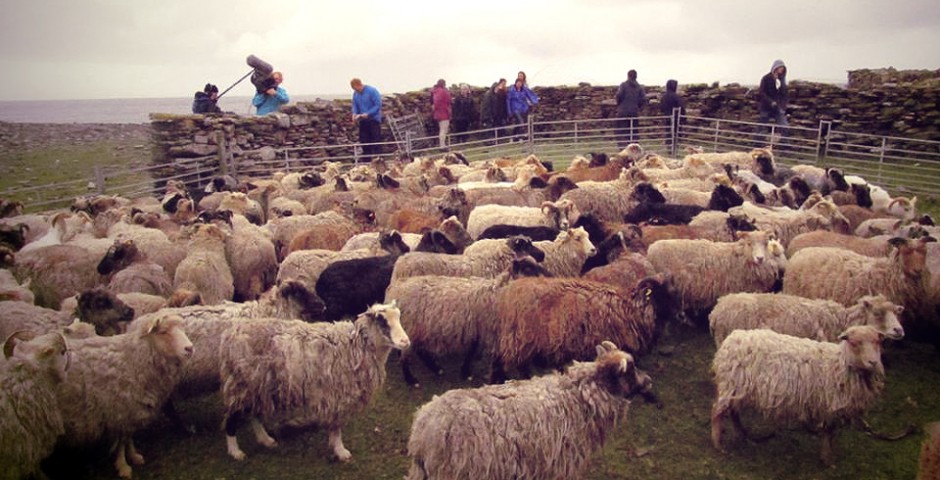“The management of the sheep is carried out by the Sheep Court, an elected body of eleven men, including the vet. They invigilate the flock, and the numbers of sheep kept by each household are regulated by the sheep regulations. The Sheep Court is responsible for ensuring that every breach in the sheep dyke is repaired as soon as possible. There is an annual count of sheep done by the sheep men and the number is recorded.”
(Christine Muir, Orkney Days, 1986)
The formal structure of the management of the flock was put in place shortly after the sheep dyke was completed. An agreement was worked out between the laird at the time, John Traill of Woodwick, and the island crofters, whereby the occupants of each croft would have a right to put a fixed number of sheep on the beach, in return for agreeing to look after the maintenance of the sheep-dyke and obey rules of flock management.
The sheep regulations were updated at various stages, and a version presented to the Crofters Commission when it visited the island in the summer of 1893.
”(1) There are 71 crofts or farms on the island of North Ronaldsay. Crofters or others are allowed to keep from 10 to 60 sheep each according to the size of their holding. Six non-tenants are allowed to have a total of 65 sheep. It is hardly conceivable that such a large flock as 2,250 sheep can be maintained on seaweed and confined to the island beaches, living on the outside of a surrounding dyke (12 to 13 miles long) which partitions their sheeprun from the cultivated part of the island.
(8) Two Sheepmen from each of the five Toonships shall be elected in order to carry out and enforce the Sheep regulations.
(9) New Sheepmen are to be sworn-in before a Magistrate, or Justice of Peace. The keeper of the Sheep Register shall for his services be allowed to keep 15 sheep over and above any other allocation he may have, and each Sheepman is likewise allowed an extra 10 above the normal allocation.”
(Quoted in Peter A. Tulloch, A Window on North Ronaldsay)
At several times of the year the sheep are gathered together and ‘punded’.
”The ‘punding’ or penning of the sheep was formerly done six times every year. The first, called the ‘scoring punding’, took place in February when the sheep were numbered in accordance with the sheep regulations. The second and third pundings were for ‘rooing’ or clipping. The earlier of these took place about mid-summer and the other about a fortnight later. Sheep dipping made another punding necessary before the start of harvest work. The selection of suitable animals for slaughter accounted for the fifth and sixth pundings of the year. These were carried out just before Christmas and the New Year, and Dennis Ness, being considered the most important pund of the island, was always punded on Christmmas Eve and New Year’s Eve. All punding dates and times had to be fixed so as to coincide with spring tides and high water.”
(Peter A. Tulloch, A Window on North Ronaldsay)
“When the signal goes up for the pund – a large orange fishing float hoisted on a pole, which can be seen all over the island – people gather at the dyke nearest the pound. The sheep are chased along the beach, and just beyond the pund, which is a dry-stane enclosure, a barrier of wire netting is stretched right down to the sea, to prevent the sheep racing past. When they are inside the pund, a temporary gate closes it off, and access is by stile only.”
(Christine Muir, Orkney Days, 1986)

